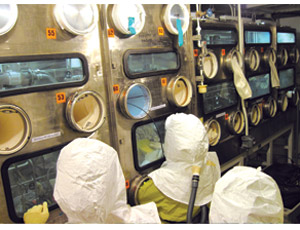The U.S. Dept. of Energy is set to start, as early as month’s end, to demolish 57 more contaminated buildings at its Hanford former nuclear weapons site in Washington state. The $62-million effort, boosted by federal stimulus funds, would involve removal of buildings once used to strip plutonium from nuclear fuel rods during bomb-making dating back to World War II.

With a public comment period closed on Dec. 27, work will focus on the 200 East Area of Hanford’s Central Plateau. CH2M Hill Plateau Remediation Co., site contractor for the area, already is starting to deactivate the East Critical Mass Laboratory, a nearly 9,000-sq-ft concrete block that was used to work remotely with uranium and plutonium solutions through glove boxes between 1961 and 1983. The project will cover another 25,000-sq-ft work support structure, among the others, but some buildings expected to be more difficult to demolish require further study, says DOE.
Work would include decontamination of targeted structures used from the mid 1940s through the late 1980s, removal of equipment, demolition and any needed backfilling. The site’s Environmental Restoration Disposal Facility, a huge on-site landfill, is expected to take demolition waste. The lab building alone could generate 13 tons of debris, says one published report.
To date, 217 of the 970 facilities on the Central Plateau and approximately one-third of the 1,492 excess structures across the Hanford site have been demolished or removed.
